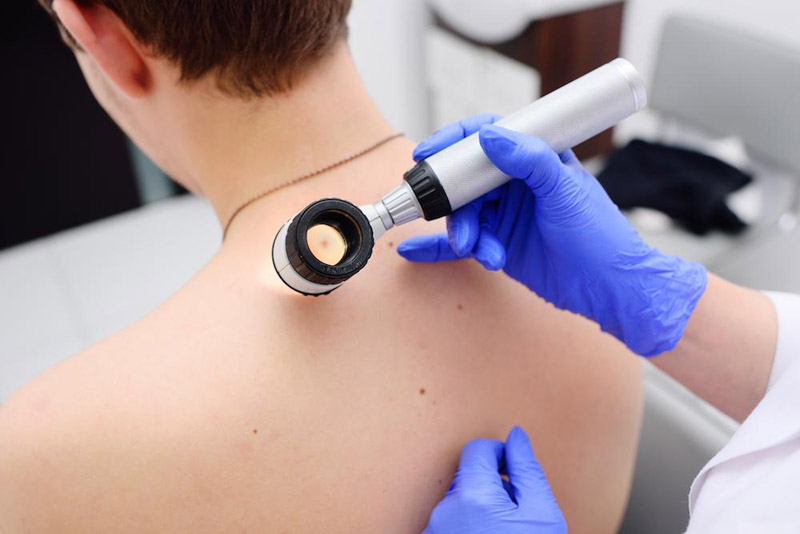Call Us
310-274-4401
Blog
When Is a Mole Cause for Concern?

Most women and men have anywhere from 10-40 moles on their body. The vast majority of moles are normal and harmless. However, sometimes a mole can become a melanoma.
Experienced dermatologist, Vicki Rapaport, MD, of Rapaport Dermatology in Beverly Hills, California, wants you to know the signs of melanoma. She recommends inspecting your moles every month as part of your general self-care routine and getting an annual skin cancer screening.
Following is a guide to what you should know about your moles, what to look out for, and when to contact a dermatologist for further evaluation. Early treatment usually leads to a cure.
What Is a Mole?
Moles are clusters of melanocytes, which are the cells that create and give your skin its pigment. All skin types — no matter how fair or dark — contain melanocytes as a normal part of the epidermis. If you have dark skin, your melanocytes produce more pigment (i.e., melanin) than someone who has fair skin.
Normal moles are often round and relatively small. Though they are usually mostly brown, they can also be shades of red, blue, or black. Some moles are present at birth. They may grow larger than moles that develop during your teen years or early adulthood. It is normal for moles to slowly enlarge as you grow, but overall, moles do not change much.
An exception to this rule occurs when your hormones fluctuate. During pregnancy, for instance, a woman’s moles may become larger and darker or undergo other changes. Though this does not always indicate a problem, it is best to have any mole that is changing evaluated.
When Moles Become Melanomas
When a melanocyte becomes cancerous, the mole begins to turn into a melanoma, which is a dangerous and potentially fatal form of cancer. However, when you catch melanoma early, it is highly curable.
Dr. Rapaport recommends familiarizing yourself with the ABCDEs of melanoma. ABCDE is a simple pneumonic you can use to assess your moles for changes. If you notice the ABCDE changes, contact Dr. Rapaport for a comprehensive examination.
A Is for Asymmetry
Uniformity and symmetry matter when it comes to moles. Normal moles generally appear the same throughout. Picture your mole as a pie with a line down the middle. If one side looks significantly different than the other, there could be cause for concern. Asymmetrical moles require further investigation.
B Is for Border
Normal, benign moles have smooth, even borders. A mole with irregular or jagged borders should be examined by a skin specialist. Check your moles for abnormal-looking borders.
C Is for Color
The color of normal moles is generally uniform throughout. You should take notice if you have a mole with a mixture of colors or if a mole has a splotchy appearance. Contact us immediately if your mole starts to bleed or ooze.
D Is for Diameter
Pay attention to changes in size or diameter when examining your moles. Normal moles grow slowly and proportionally over time. Rapid growth may indicate unusual activity within the melanocytes. If a new mole is ¼- inch or more, or if an existing mole grows quickly, contact us right away.
E Is for Evolving
When normal moles change, they do so slowly. A mole that changes rapidly or significantly should catch your and your dermatologist’s attention.
Other Risks
Count your moles. If you have more than 50, you may have a skin type that is more prone to developing irregular moles that could become melanoma. As with many medical conditions, family history counts. If a close blood relative had melanoma, you are at risk, too.
A huge risk for developing melanoma is exposing your moles to sunlight. Some melanomas develop from moles that are not on sun-exposed skin, but the largest proportion of melanomas are located in sun-exposed areas. Lighter skin type is an additional risk factor that makes sun exposure even riskier.
Most moles never develop into cancer. Nevertheless, it is always better to know your ABCDEs and check your moles regularly at home for suspicious changes. Detecting a potential problem at an early stage just may save your life
Dr. Rapaport takes a look at your suspicious mole so that you get the answers, or the treatment, you need as soon as possible. If your mole needs further attention, you are already with an expert. Dr. Rapaport removes and even cures many skin cancers in our office.
If you notice any unusual moles or changes or would like a skin cancer screening, call us at Rapaport Dermatology to schedule a consultation. Our office is located in Beverly Hills. You can also send us a message on our website.
